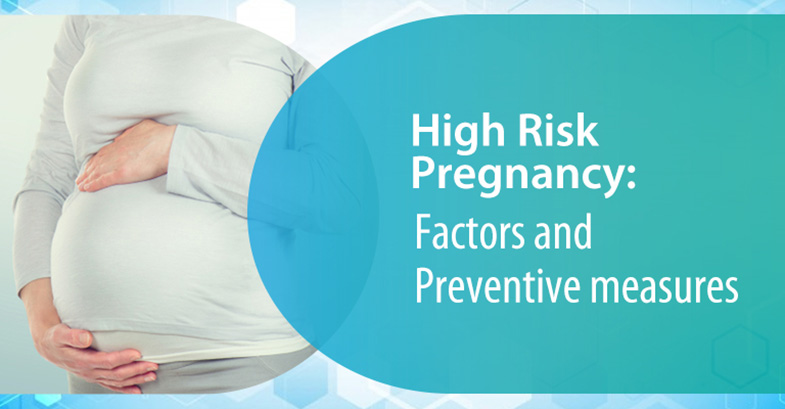High-risk pregnancies are those where there is a chance that either the mother, the unborn child, or both people could be harmed. High-risk pregnancies must be handled by a professional to guarantee the best outcome for the mother and child.
Early prenatal care and frequent prenatal visits are beneficial for many women in ensuring healthy pregnancies and straightforward deliveries.
Factors that Increase the Risk of Pregnancy
- Maternal age: One of the most common risk factors for a high-risk pregnancy is the pregnant woman’s age. Women who are under the age of 17 or over the age of 35 are more likely to experience complications than those who are in their late teens or early twenties. The chance of miscarriage and genetic issues increases significantly beyond the age of 40.
- Pre-existing medical conditions, such as depression, diabetes, high blood pressure, HIV infection, autoimmune illness, or sexually transmitted diseases.
- Obesity and being overweight: Obesity increases the risk of gestational diabetes, hypertension, preeclampsia, stillbirth, neural tube defects, and cesarean delivery. According to NICHD experts, obesity ups the likelihood of babies having a heart abnormality by 15%.
High-risk pregnancies might be caused by a previous miscarriage, problems from a prior pregnancy, or a family history of genetic illnesses.
Before getting pregnant, you should see your doctor if you have a medical issue. To safeguard the health of you and your unborn child, your doctor might prescribe further tests, change your medication, or offer you advice.
health problems that can develop during pregnancy. It is possible to develop or receive a diagnosis of illnesses that can harm you and your unborn child during pregnancy, even if you are in good health when you become pregnant.
Pregnancy related issues:
- Labor that starts before the 37th week of pregnancy is referred to as premature labor. Premature births account for 12% of all babies in the US. Later-life health issues or developmental difficulties are more likely to affect preemies. There are several risk factors that women should be aware of, such as specific infections, a shorter cervix, or a history of premature birth, even if it is impossible to determine which women will give birth prematurely. Risks of multiple pregnancies include premature birth, gestational diabetes, and pregnancy-induced high blood pressure. These pregnancies are on the rise as more women turn to infertility treatments.These infants have a higher risk of developing chronic health conditions including cerebral palsy or delayed development. The majority of multiple births do occur in healthy babies, nevertheless.
- Multiple pregnancies signify that you are carrying more than one child (twins, triplets, quadruplets, etc.). Multiple pregnancies, which are becoming more prevalent as women utilize more infertility treatments, increase the risk of premature birth, gestational diabetes, and pregnancy-induced high blood pressure. These infants have a higher risk of developing chronic health conditions including cerebral palsy or delayed development. The majority of multiple births do occur in healthy babies, nevertheless.
- Placenta previa, a condition in which the placenta covers the cervix, can cause bleeding, particularly if the woman is experiencing contractions. The doctor may advise a cesarean section if the placenta is still covering the cervix at the end of pregnancy to reduce the risk of hemorrhage for the mother and unborn child.
- On occasion, ultrasonography can detect fetal problems. Approximately 2% to 3% of all neonates have little or significant structural difficulty with their development. Although these challenges are not always foreseeable, there may be a family history of fetal abnormalities.
Women with high-risk pregnancies should receive care from a specialist team of healthcare professionals to ensure the best results.

